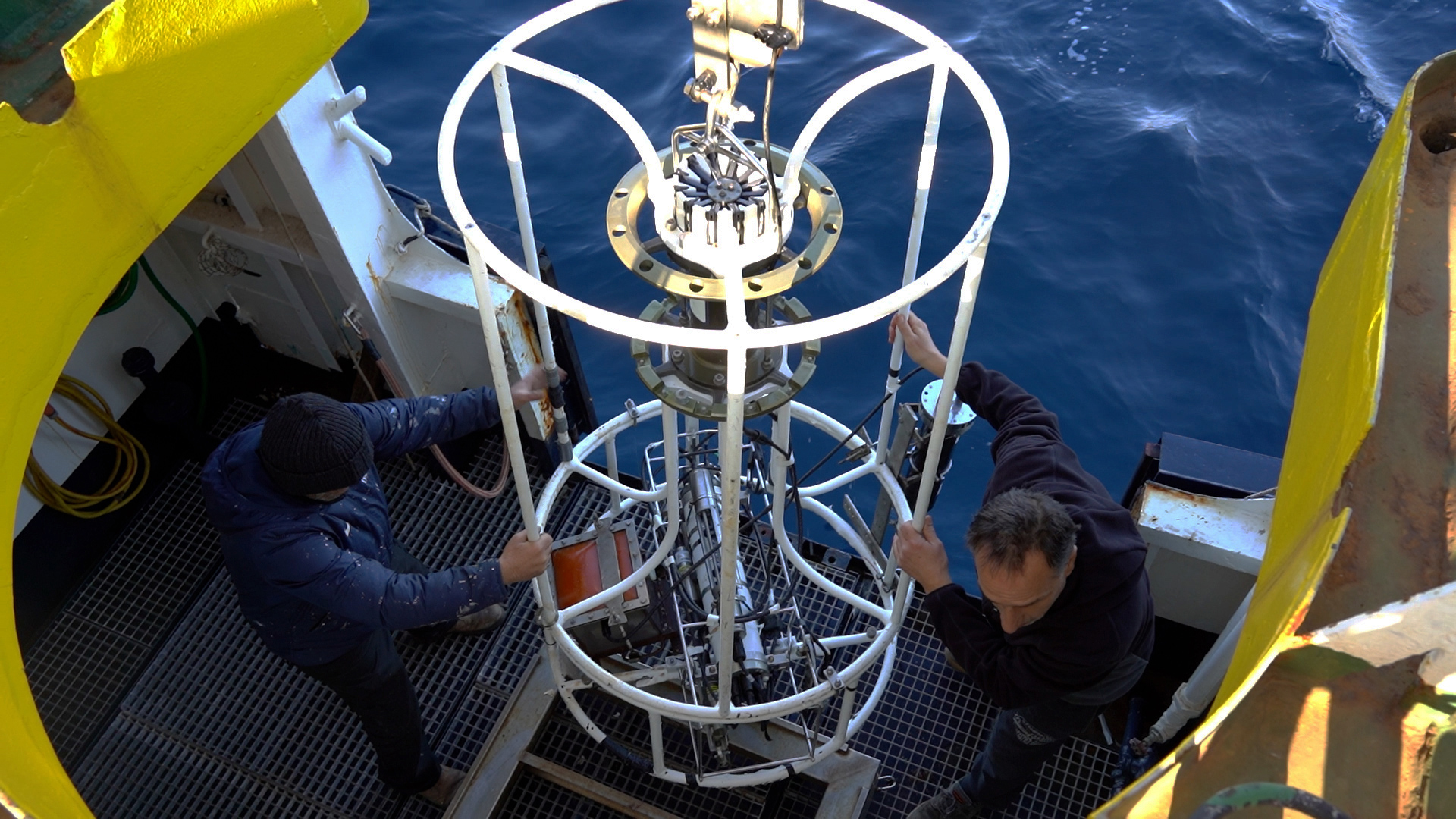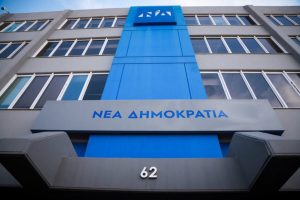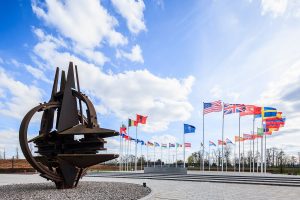Wednesday, February 12. At Gate E1, far from the bustle of the passenger port, there’s not a great deal going on. At the end of the pier, a striking, unconventional metal vessel painted blue and yellow is moored on this concrete border between civilization and the open sea. The AEGAEO is an oceanographic research vessel purpose-built for probing deep waters and unpredictable currents. Far from being just another ship in the harbor, this peculiar craft, with its mechanical arms and advanced instruments, is nothing short of a floating research station. The Aegean is our last line of scientific defense against the submarine surprises the sea can spring. The scientists aboard this mobile geophysical and oceanographic research center, constructed to explore the unknown with pinpoint precision, are preparing to embark in search of data and answers in the Earth’s depths, where magma simmers and history is recorded in layers of lava.
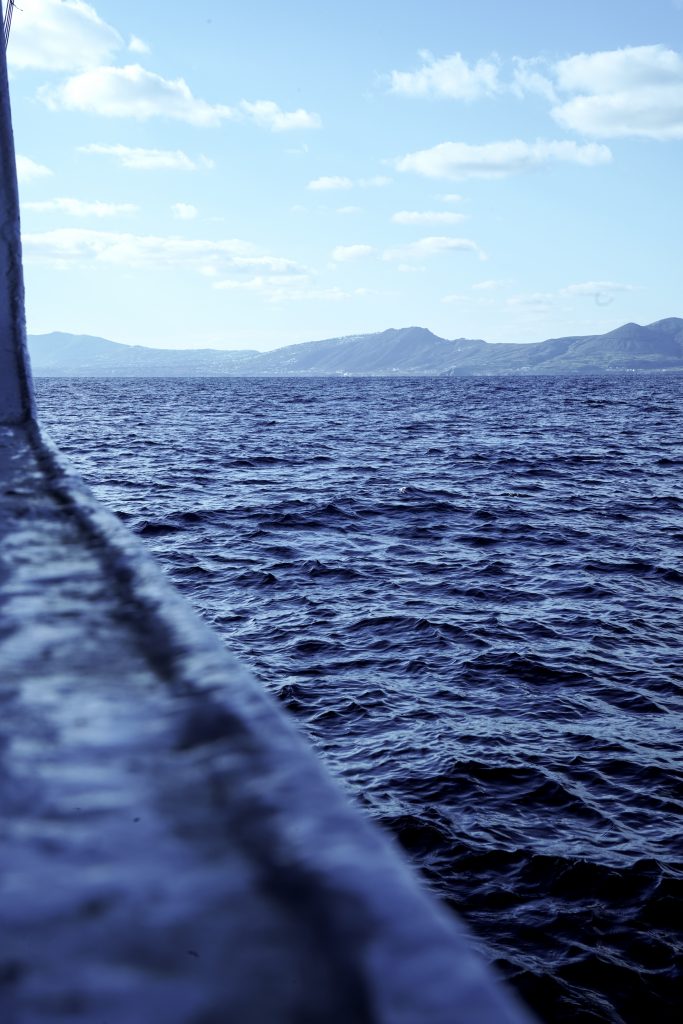
Built in 1985 at the Chalkida shipyards, the AEGAEO was launched in an era when technology was still striving to understand the mysteries of the sea, and Greece to fully grasp the meaning of scientific fieldwork. In its early years, it was a small vessel with limited capabilities. Then, in 1997, something unusual happened for a research ship in Greece: it underwent a transformation worthy of its scientific ambitions. Its length was increased to 61.5 meters, and its core—the engines and laboratories—was upgraded. Soon, its range had expanded beyond coastal missions into international waters. With advanced instruments that allowed it to take precision measurements, monitor seismic activity in real-time, the Aegean became a key asset in marine research, capable of enhancing our understanding of the Earth’s geodynamic processes.
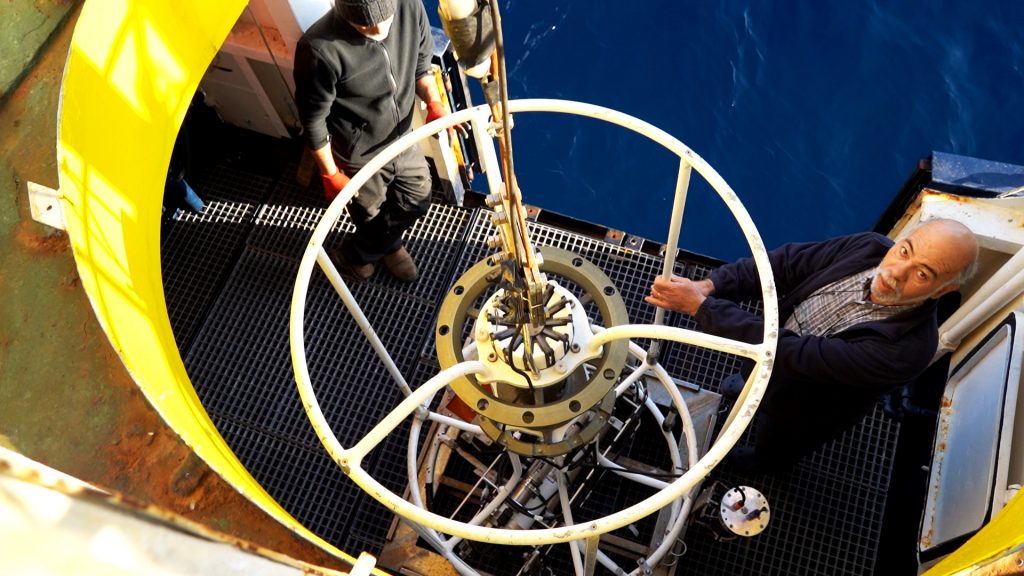
For decades, the ship has been operated under the auspices of the Hellenic Center for Marine Research (HCMR), a public research organization overseen by the General Secretariat for Research and Innovation at the Ministry of Development. A veteran of the deep after 40 years of service, it has logged hundreds of thousands of nautical miles, from the warm currents of the Mediterranean to the mysterious depths of the Black Sea and the murky waters of the Red Sea. And while it is aging, with spare parts becoming increasingly difficult to source, it remains Greece’s only serious response to marine research.
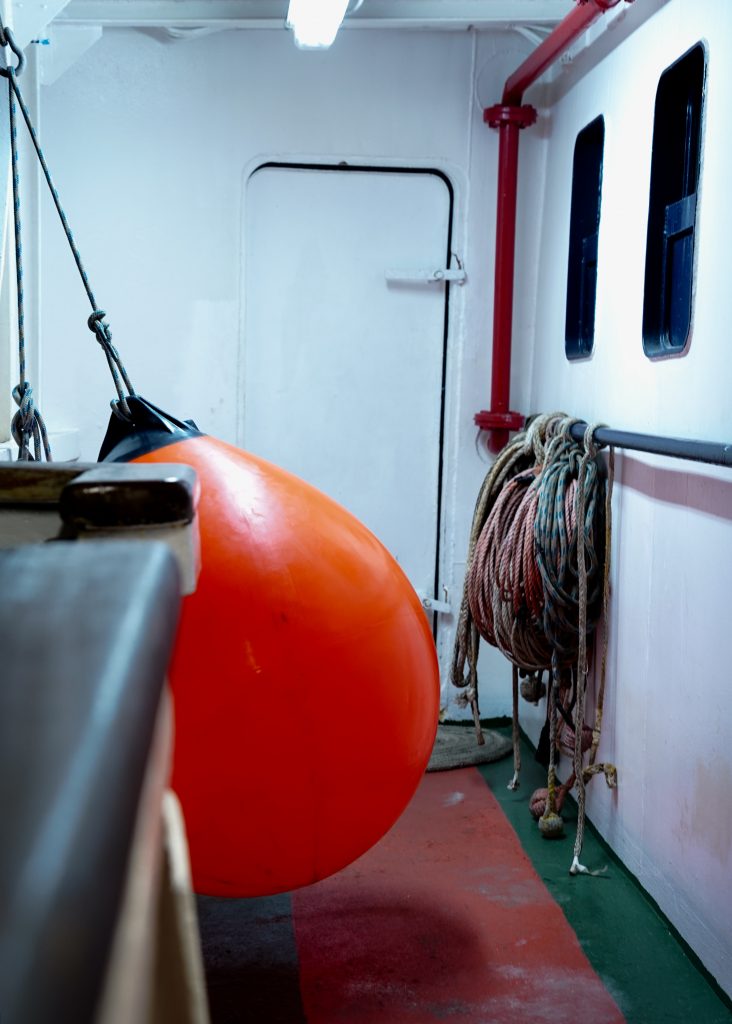
“It’s an old boat with many important international missions under its belt, but if we’re being honest, it’s nearing the end of its service. I don’t know how much longer it can last. It was originally built in 1985 as a response to the Turkish research vessels Sismik and Hora, and under normal circumstances, it would already have been retired. It should have been transformed into something worthy of its place in scientific history—a floating museum dedicated to marine research,” says Dimitris Sakellariou, a seasoned field researcher who has led dozens of the AEGAEO ‘s scientific voyages and taken its Thetis submersible down countless times. Now, as the Director of Research at HCMR’s Institute of Oceanography, he is preparing for yet another mission—a demanding, multi-day expedition. Sakellariou and his team will be conducting an in-depth, multi-layered study of the faults surrounding Santorini, where the Earth breathes in ways we still struggle to understand. It won’t be the first time the AEGAEO has mapped volcanic structures, recorded underwater earthquakes, and measured gases escaping from the bowels of the Earth, but the consensus among the scientists boarding the vessel is that they are setting out to study a truly unprecedented geological phenomenon.
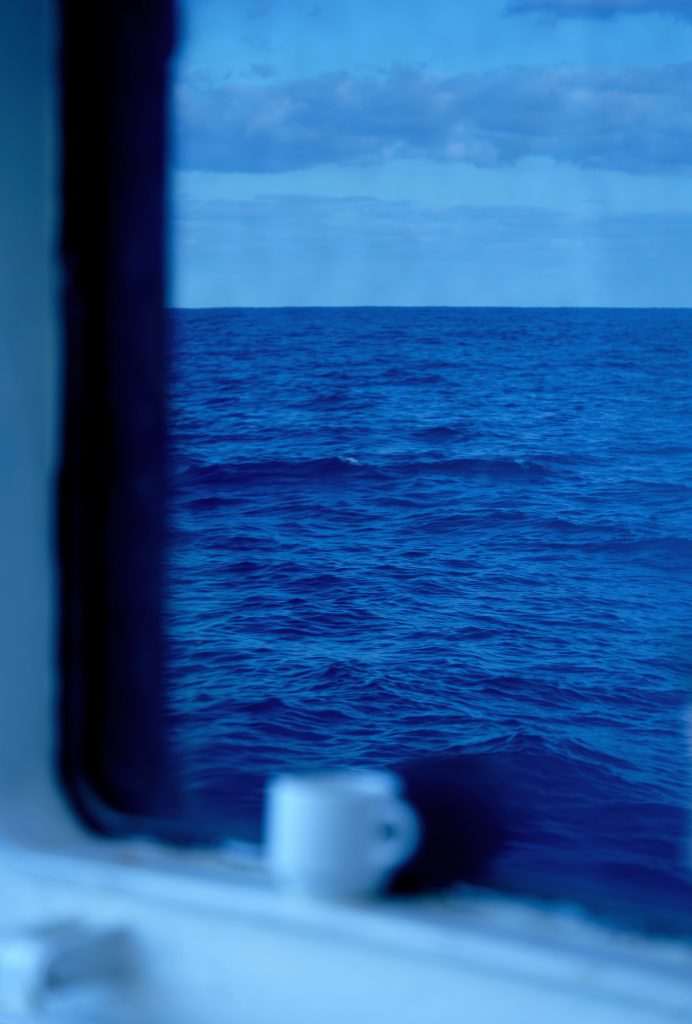
The AEGAEO‘s crew is a mosaic of different scientific fields and specialties—geophysicists and oceanographers, geologists and nuclear physicists specializing in radiation—all united by a common imperative: to understand the forces driving this unusual and worrying geological phenomenon, which many scientists admit is unlike anything they’ve seen before.
“In this current seismic sequence, known as a swarm, we’re seeing earthquakes that frequently reach mid-range magnitudes, sometimes as high as 5.3 on the Richter scale, which is anything but normal for a seismic swarm. From a geological perspective, it’s an extremely interesting and clearly unprecedented phenomenon. That’s why we need to study it carefully, to piece together the puzzle and figure out what’s happening,” Sakellariou explains as the Aegean fires up its engines at the pier. The 31 people aboard the research vessel are divided between 21 crew members responsible for its operation, including petty officers, able seamen, cooks, electricians, and engineers, and the 10-member scientific team.

“We’ll be sailing at ten knots, and the winds might pick up, so be prepared for a bumpy ride,” the ship’s second officer, Michail Angelos, warns us with a smile as two sailors untie the mooring lines. “One thing’s for sure—tomorrow morning, we’ll be having breakfast above the Kolumbo volcano,” he adds as he sets a course for the open waters off Santorini
Day 2 – Sailing Over the Kolumbo Volcano Ring
Thursday, February 13.
The sea above the ring of volcanic cones is dead calm. According to the latest seismic data from the Seismology Laboratory of the University of Athens, between the onset of seismic activity in the Santorini area on January 26 and February 9, more than 14,000 earthquakes have been detected—an unrelenting underground disturbance that’s impossible to ignore. On February 9 alone, seismographs recorded over 1,100 tremors. And while most were small in magnitude, 240 reached 2.5 on the Richter scale, 14 hit 4.0, and there were two stronger quakes at 4.5 and one at 5.0. The pattern remained the same over the following days, with quakes frequently ranging between four and five on the Richter scale.
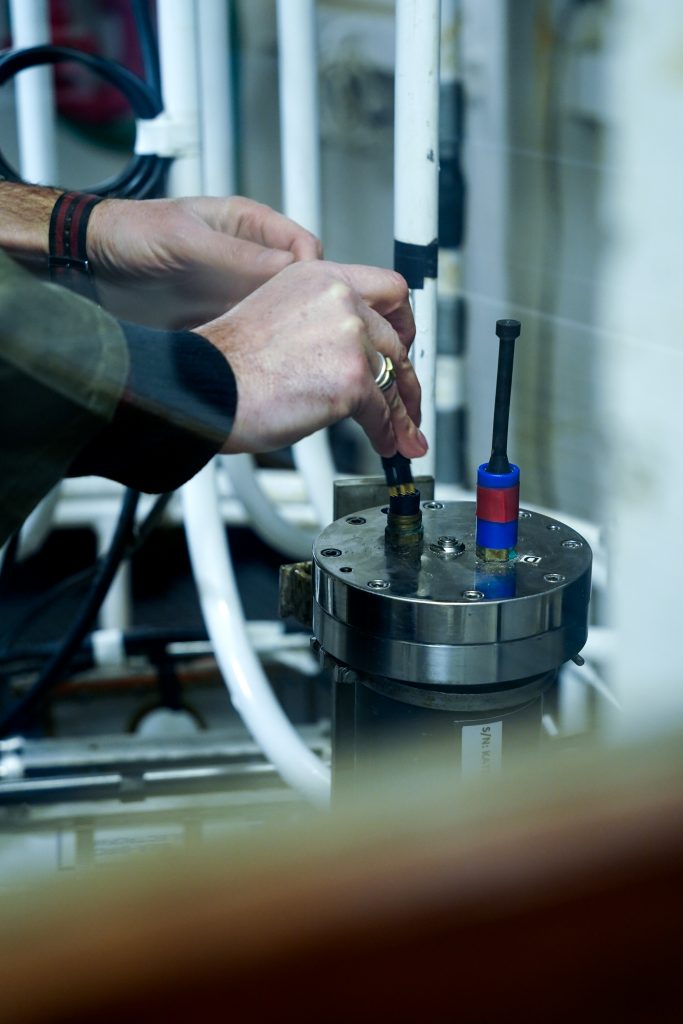
The AEGAEO ‘s scientists were at their stations bright and early. Inside the ship’s laboratories, seismic recorders were primed to detect every vibration on the seabed, geophysical sensors were ready to analyze the composition of escaping gases—each instrument calibrated for depths never seen by a human eye. Their mission: to decipher the signals from the ocean floor, searching for signs of volcanic activity and seismic shifts.
The first measurements will be taken using the CTD instrument which is equipped with an array of high-precision sensors including a dissolved oxygen sensor, a turbidity sensor, and detectors for pH, chlorophyll, and other elements. The CTD station is presided over by an experienced geophysicist, Dr. Dimitris Velaoras, a seasoned ocean physics researcher who would deploy a large bouquet of sensors in search of gas emissions.
“We’re looking for temperature and salinity fluctuations to see if they correspond to any emissions. It’s also crucial to examine radiation levels, particularly radon, a gas that occurs naturally on the seabed. Depending on its strength, we’ll know if gases are escaping. Simultaneously, our multibeam sonar will be continuously mapping the seabed in high resolution, revealing potential faults, new fissures, or landslides within the ocean floor. Essentially, we’re trying to see how the seabed has changed after recent events,” Velaoras explains.
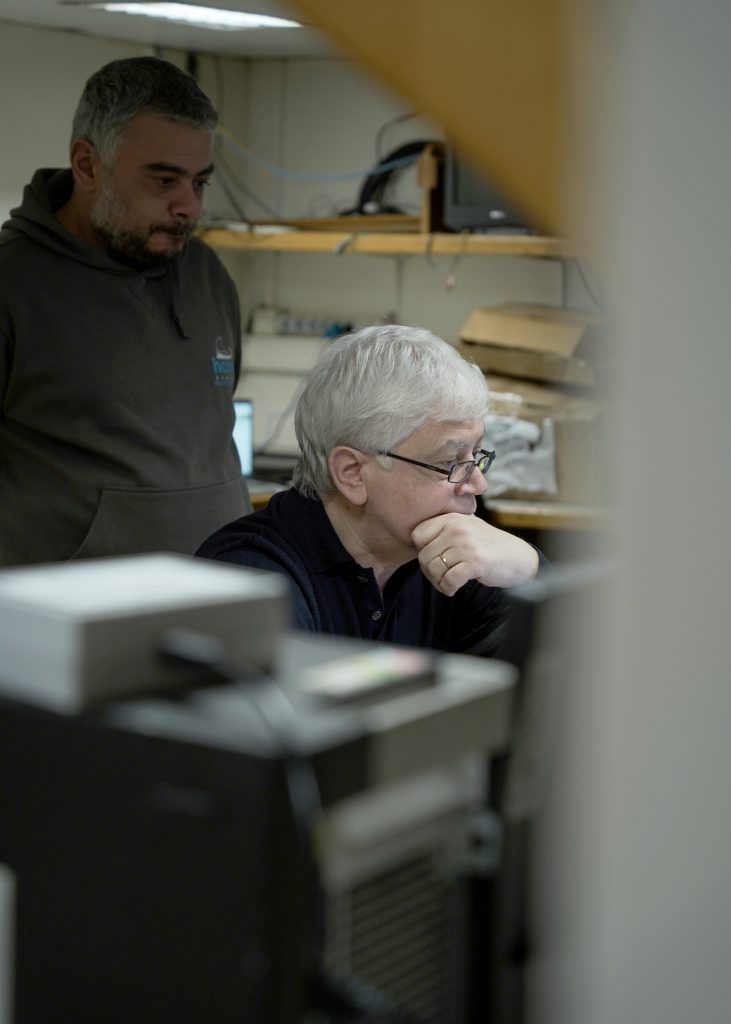
The vessel is also equipped with a device that allows the CTD instrument to measure the noble gas radon on-site, without the need for water analysis. This unique sensor is a Greek patent, developed years ago by the nuclear physicist and radiation specialist Christos Tsamparis. As he told us, “The device has been up and running since 2004, and fortunately, it continues to provide us with reliable data.”
“Poverty breeds ingenuity…” interjects mission leader Dimitris Sakellariou with a smile, making a clear reference to the scarcity of research funding in Greece. But, despite their lack of cutting-edge technology and the significant challenges they face, the scientists aboard the Aegean demonstrate remarkable ingenuity and continue their work undeterred.
“There are four main elements we examine in volcanic process studies,” continues nuclear physicist Christos Tsabaris after a brief pause. “The first is radon, a noble gas that is inert and does not interact chemically. Then we have methane, carbon dioxide, and hydrogen sulfide. If even one of these elements is found in higher-than-normal concentrations on the seabed, it indicates that some form of volcanic system agitation is occurring—hence, the higher concentrations. The Kolumbo volcano is one of the key sites for understanding what may have been happening in recent weeks.”
Vasilis Kapsimalis, the deputy director of the Institute of Oceanography, is a senior researcher specializing in marine geology and, more specifically, sedimentology. He is aboard the AEGAEO to assist the mission in mapping the seabed and analyzing the geomorphological features observed on the ocean floor. “From the seismic profiles we collect and the cross-sections we generate, we aim to identify active faults in the upper section of the Earth’s solid crust. These could be either old faults or new ones. In geology, however, the concept of time differs—when we talk about old and new faults, the timescales range from thousands to millions of years.”
By the afternoon, half the scientific team is having their meal in the ship’s narrow mess, while their colleagues continue data collection at their stations. In the small room housing the multibeam sonar, electrical engineer Giannis Morfis is on duty, operating the equipment and processing the geophysical data. Seated with him are marine geologist Stelios Petrakis, geophysicist Isidoros Livanos, and geologist-geophysicist Alexandros Varesis. “We operate this instrument round the clock, because it provides a continuous stream of data. Each of us has a four-hour shift during the day and another four-hour shift at night. This machine sends an acoustic signal, receives the echoes, and essentially generates a three-dimensional representation of the seabed,” Morfis explains, his eyes fixed on the flood of incoming data displayed on his computer screen.
By nightfall, most of the crew have retired to their cabins, while in the small multibeam sonar monitoring room, the screens continue to fill with data—numbers, recordings, and images of an underwater world that no human eye will ever see first-hand.
Day 3 – Mapping the Aegean’s Faults
The crew has started falling into the rhythm of life at sea, but routine is never truly routine aboard the AIGAIO. Each dawn brings new measurements, new data, and new uncertainties. “That’s the nature of science—sometimes you come back with more questions than answers,” reflects mission leader Dimitris Sakellariou over breakfast.
Sipping their first coffees of the day, the scientists discuss the urgent need for Greece’s marine research sector to finally acquire a new research vessel equipped with modern instruments along with better infrastructure.
“Things could have been different as early as 2019,” reveals Sakellariou, who has long pursued the dream of securing a state-of-the-art national research ship for Greece. “In April 2019, the European Investment Bank approved funding for a new research vessel to replace the Aegean, offering to provide 75% of the budget—41 million euros. A contract was signed between the EIB and the Greek government, with Finance Minister Staikouras and Deputy Minister of Development & Investments Dimas committing to covering the remaining 14 million euros. That money never materialized.” And so, the new ship remained a pipe dream gathering dust in folders and spreadsheets, while the old and weary Aegean continues to take to sea, like an aging sailor who refuses to leave their post on the deck.
But, floating “museum” or not, the AEGAEO will be providing much-needed answers in the days ahead about the volcanic and seismic processes unfolding beneath the sea—phenomena that have sparked widespread concern. The scientists aboard the marine research vessel well know this journey is about more than just collecting data and scientific measurements. It’s an interaction between the human intellect and the tectonic forces that have been shaping our planet for millions of years. And perhaps, an opportunity to listen to Earth take one more deep breath before its next exhalation.
photo credit Theodoris Kapetanakis
